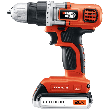We received an automated phone call from the water company several months ago. The cheery female voice of the recording told us that we had used an above average amount of water that week. Alarmed, and expecting an exorbitant water bill the following month, we checked all of the visible pipes of the house, made sure that the toilets weren't running water, and checked the exterior faucets of the house. We found no tell-tale signs of leakage, and held our breath until the water bill arrived. Apparently, and much to our relief, the water company had misdialed and called the wrong address.
However, there have been times in other situations where I've had to address leaky pipes. One unpleasant circumstance found me underneath the crawl space of the house, trying to patch a burst pipe in the coldest part of the winter. If you have leaky pipes, follow these steps for fixing them:
If the leak has stopped, your chore is finished. If you still see water spewing, that means you have a crack or a hole in the pipe. To patch the crack or hole, follow these steps:
After you've allowed the pipe to cure, turn the water back on and check for leaks. If you still see water leaking, then you might need to call a plumber.

MAX Power! A powerful lithium-ion drill/driver that delivers 0-to-650 RPM and 115 inches-per-pound of torque in a lightweight, easy-to-use package. An anti-slip soft grip and LED worklight makes this tool a delight to use. Check out Black & Decker 20-Volt Cordless Drill/Driver today!
Have you ever found a burst pipe in your bathroom, kitchen, or else where in your home? If you have, then you know how ...
Discover MoreEventually everything in your home will need to be repaired or replaced, and your water heater is no different. Replacing ...
Discover MoreA fairly common problem that many homeowners face during the cold winter months is their pipes freezing and bursting. One ...
Discover MoreThere are currently no comments for this tip. (Be the first to leave your comment—just use the simple form above!)
Copyright © 2025 Sharon Parq Associates, Inc.
Comments